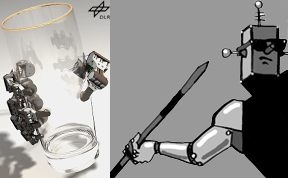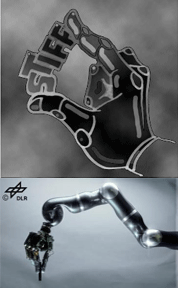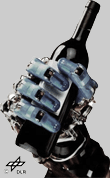

|
Human Hand-Arm Modelling The role of TUD is to provide physiologically realistic human models of the neuromechanical system and to develop identification algorithms for estimation of human joint impedance. Continuous estimation of time-varying joint impedance provides important information for the analysis of human movement control. At TUD we developed a new identification algorithm that enables high temporal resolution impedance estimation during e.g. goal directed arm movements. The next step will be to derive feedforward and feedback control properties from the estimated endpoint impedances for various movement tasks and loading conditions. The Delft Shoulder and Elbow Model is extended with a wrist joint (2 DoF saddle joint) based on human morphological data. A hand model was developed incorporating 21 DoF (4 for each finger and the thumb, one for the hand palm). All relevant muscle attachments were measured on the same cadaver as has been used to derive the anatomical data for the shoulder and arm. The wrist-hand model is built in SPACAR, the multimode computer package that has also been used for the arm and shoulder. Ultrasound was used to measure tendon excursions for individual subjects in vivo in order to derive individual moment arms and interaction between the fingers. A state space version of the Huxley muscle model has been developed and parameterized on in vivo human data. Nonlinear mechanical features of muscles, such as the short range stiffness, was well captured by the model. Further, a user interface has been developed for analysis of muscle spindle functioning (length/velocity sensors of muscles). Both the muscle and spindle model are ready for implementation in the DSEM.
|


| |



